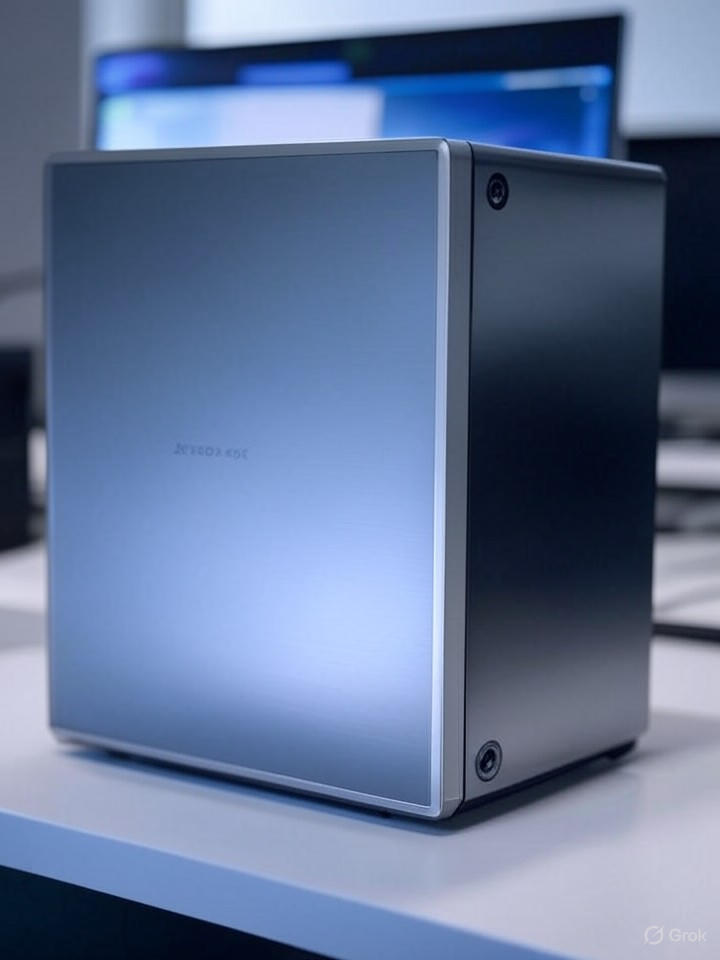In the rapidly evolving world of high-performance computing, Nvidia Corp. has once again pushed boundaries with a discreet launch that could redefine compact systems for AI and edge computing. The company’s latest offering, the Jetson AGX Thor, emerges as its most potent mini PC to date, boasting computational prowess that surpasses 2,070 teraflops in AI performance. This device, unveiled quietly amid the clamor of consumer GPU announcements, targets developers and enterprises tackling complex workflows like real-time video processing and autonomous systems.
At its core, the Jetson AGX Thor leverages Nvidia’s cutting-edge Blackwell architecture, the same foundation powering the GeForce RTX 5090 graphics card. Industry observers note its striking resemblance to the RTX 5090’s design ethos, with a sleek, black chassis that hints at consumer-grade aesthetics while packing professional-grade internals. According to a detailed report from TechRadar, this mini PC supports multiple 4K and 8K video streams, making it ideal for advanced applications in surveillance, robotics, and content creation.
Unpacking the Performance Metrics
Delving deeper, the Jetson AGX Thor’s 2,070 TFLOPS figure represents a monumental leap in floating-point operations per second, eclipsing previous generations like the Jetson AGX Orin by a factor of several magnitudes. This isn’t mere hype; it’s backed by Nvidia’s integration of next-gen tensor cores and enhanced memory bandwidth, enabling seamless handling of AI inferencing at the edge. For industry insiders, this translates to reduced latency in mission-critical scenarios, such as autonomous vehicle navigation or industrial automation.
Comparisons to the RTX 5090 are inevitable, given shared architectural DNA. Specs from TechPowerUp’s GPU Database reveal the RTX 5090’s 21,760 cores and 32GB GDDR7 memory, elements that echo in the Thor’s design for scaled-down yet potent compute. However, where the RTX 5090 focuses on gaming and creative workloads—as noted in a review by Tom’s Hardware, which highlighted its power draw and initial driver issues—the Thor pivots toward embedded systems with robust networking and expansion options.
Implications for Enterprise Adoption
Nvidia’s strategy here appears calculated to bridge consumer and professional realms, potentially disrupting markets dominated by larger servers. The mini PC’s compact form factor, measuring under a foot in each dimension, challenges traditional notions of high-performance hardware, allowing deployment in space-constrained environments like drones or smart factories. Pricing, though not officially disclosed, is speculated to align with enterprise budgets, starting in the thousands, far from consumer accessibility but justified by its capabilities.
Moreover, this launch coincides with broader industry trends toward AI acceleration. As Nvidia’s own site details for the RTX 5090, Blackwell’s efficiencies in ray tracing and DLSS translate to the Thor’s support for multi-stream video decoding, a boon for media professionals. Yet, challenges remain: power consumption could strain portable setups, and integration with existing ecosystems demands custom software tweaks.
Future Horizons and Competitive Pressures
Looking ahead, the Jetson AGX Thor positions Nvidia to dominate edge AI, where competitors like Intel and AMD are ramping up their own mini PC offerings. For instance, Asus’s recent ROG NUC models with RTX 5070 GPUs, as covered by NotebookCheck.net, aim at gaming, but lack the Thor’s raw AI throughput. This divergence underscores Nvidia’s bet on specialized compute over broad appeal.
Insiders should watch how this mini PC influences hybrid workflows, blending gaming-derived tech with industrial needs. With rumors from TechRadar suggesting the RTX 5090’s near-doubling of prior gen speeds, the Thor could similarly accelerate innovation cycles. Ultimately, Nvidia’s quiet unveiling signals a confident stride into a future where mini PCs aren’t just small—they’re transformative forces in computing.




 WebProNews is an iEntry Publication
WebProNews is an iEntry Publication